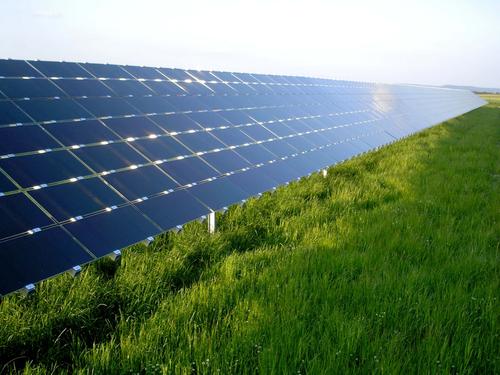
Led by Loughborough University PhD student Tom Fiducia, the work sought to establish the mechanism by which selenium enhanced the performance of cadmium telluride (CdTe) solar panels. According to the paper, which appears in Nature Energy, CdTe panels currently produce the cheapest form of solar available, undercutting hydrocarbons in many parts of the world.
Alloying selenium into the CdTe absorber has taken cell efficiency from 19.5 per cent to its current record of 22.1 per cent. It was previously known that the presence of selenium helped reduce the bandgap of the absorber material, increasing the cell short-circuit current, but this did not fully explain the efficiency gains. However, by measuring how much light was emitted from the panels, the team was able to solve the puzzle. Selenium enables higher luminescence efficiency and longer diffusion lengths in the alloyed material, overcoming critical defects in the bulk of the absorber layer.
“While it seems counter-intuitive, good solar cell material that is defect-free is very efficient at emitting light, and so luminesces strongly,” said Fiducia.
“We mapped the luminescence emitted from a selenium-containing solar cell at a resolution of around 1/10,000th of a millimetre and compared it to a similarly high-resolution map of the selenium concentration taken on the exact same area of the cell. It is strikingly obvious when you see the data that selenium-rich regions luminesce much more brightly than the pure cadmium telluride, and the effect is remarkably strong.”
According to Fiducia, now that the mechanism behind the gains has been revealed, it could be exploited to deliver even better performance of CdTe cells, potentially making solar energy even cheaper across the globe.
“Now that the selenium-induced efficiency improvement is better understood, it may be possible to use this knowledge to increase the efficiency of cadmium telluride solar panels even further,” he said.
“For instance, this could be by simply increasing the amount of selenium in the devices or altering its distributions within the cell. If efficiency can be increased, this would further decrease electricity prices and have a direct positive impact on regions that adopt the technology.”




Glasgow trial explores AR cues for autonomous road safety
They've ploughed into a few vulnerable road users in the past. Making that less likely will make it spectacularly easy to stop the traffic for...